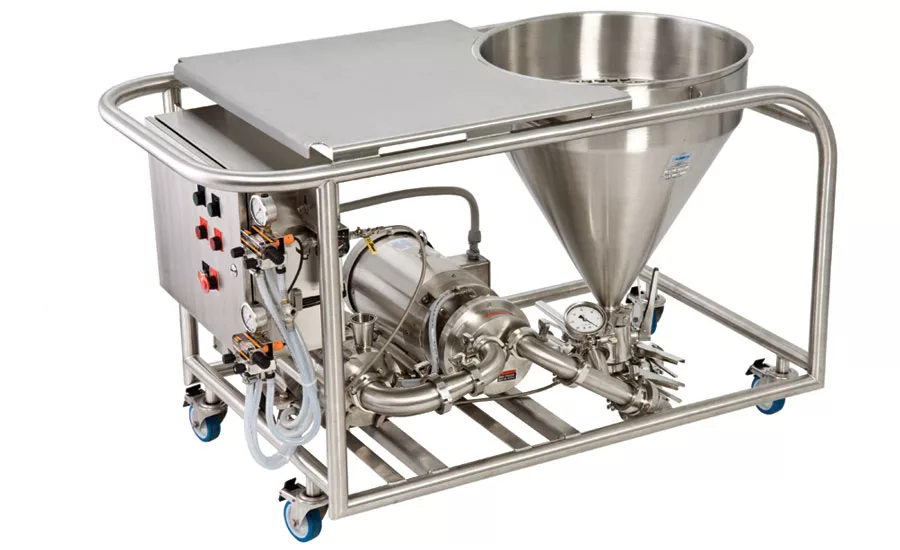Data collection proves valuable in processing automation
High-pressure processing gains traction in beverage market

NBC’s public service announcements within the series title “The More You Know” have been informing TV viewers on a wide range of topics since its inception in 1989. As beverage-makers increasingly utilize alternative ingredients and high-pressure processing (HPP) technology, “the more they know” can help improve productivity and ultimately their bottom line.
Automating processing operations has helped beverage manufacturers collect the data they need to streamline this formulation step.
“Automation is a key contributor to product consistency and increased efficiencies whether implementing a batch or a continuous-blending solution,” says Kevin Nowack, director of engineering with Marshfield, Wis.-based ESE Inc., a certified member of the Control System Integrators Association (CSIA). “Today’s integration capabilities combine production scheduling, ingredient and packaging material lot tracking, flexible recipe configurations, work flows and SOP, as well as the traditional process-control integration.
“The data generated from the system is captured within historians and presented to the user based on their requirements and preferred viewing method (email, text message, dashboard, etc.),” he continues. “Information from the controls system can also be shared with [a] LIMS (laboratory information management system) and CMMS (computerized maintenance management system).”
Nowack explains that control platforms are important when selecting processing equipment in order to accommodate the formulator’s needs. “The control integration in today’s connected enterprise leverages the program structure at this level to streamline the data integration to and from the process control layer,” he says. “Most equipment manufacturers don’t take into account the integration requirements to meet the needs of the enterprise; therefore, extensive programming modifications or rewrites may be required.”
Rick Early, beverage market manager for Londonderry, N.H.-based Admix, anticipates that control operations will proliferate for this equipment as it eases batching complexities. “Menu-drive PLC-controlled batching will reduce [the] manual addition of large quantities of powder,” he says.
Another valuable component to these automated operations is high-shear mixing. “Conventional mixing equipment is not designed to wet, disperse and fully hydrate today’s beverage functional ingredients like proteins, starches, gums [and] vitamins,” he says. “High shear is required to fully hydrate these ingredients.”
To help beverage-makers achieve this, Admix offers its Fastfeed system, which allows instant mixing of the fortification ingredients on a single pass to the final batch tank, Early explains.
High praise for HPP
However, fortification trends are not the only way beverage manufacturers are trying to meet consumers’ health-and-wellness demands. Preserving the natural nutrients in beverages like juices is gaining more attention as brand owners explore HPP operations.
“HPP can add value to beverage products such as nutrient retention and improved taste and/or texture,” says Joyce Longfield, a consultant with Villa Rica, Ga.-based Universal Pasteurization Co. “HPP is an in-package step, in which there is no risk to the product being exposed to pathogens post-processing. It is the only technology [that] offers beverage manufacturers a product [that] tastes the same and is as nutrient dense as before it was processed, yet with additional food safety and extended refrigerated shelf-life benefits.
“The extension of shelf life and retention of taste and nutrients has improved the economics of many cold-pressed juice companies, whose products previously only had three- to five-day shelf lives,” she continues.
Jaime Nicolas-Correa, director for Hiperbaric USA, touts its food safety capabilities but notes its process can present challenges. “The fact that it is after packaging is challenging on the operations side but also avoids the risk of recontamination.”
He adds that because this processing is administered after packaging, consideration for the handling of the bottles must be taken into account. “Since it is a post-packaging kill step there is a challenge on handling the bottles after filling into the HPP baskets for HPP and unloading them after HPP for case packing,” Nicolas-Correa says. “Most companies have a tote dumper to help [with] loading the bottles into the baskets, and a tilt station after HPP connected to a conveyor that goes into a shaker table and dryer right before case packing.”
However, the food safety and efficacy benefits associated with HPP are celebrated by many. Yet, financial considerations must be acknowledged, Universal Pasteurizations’ Longfield notes.
“Before looking into purchasing equipment, juice manufacturers should search for a co-packer who can make your product and then send it to an HPP service provider, like Universal Pasteurization Co.,” she says. “Utilizing a co-packer will eliminate or reduce the need to raise capital to purchase your own equipment as well and will be more cost efficient overall since you are cutting production costs.” BI
Looking for a reprint of this article?
From high-res PDFs to custom plaques, order your copy today!







